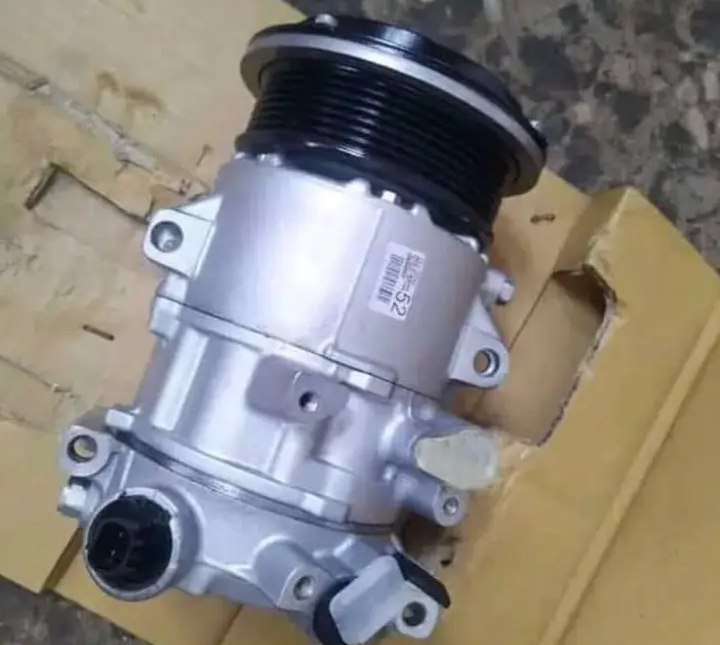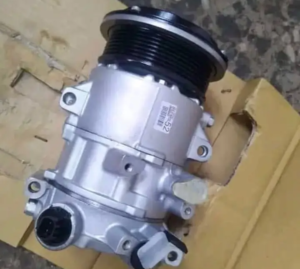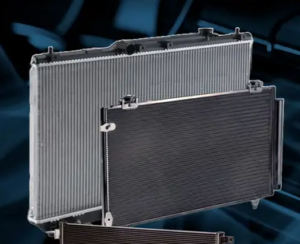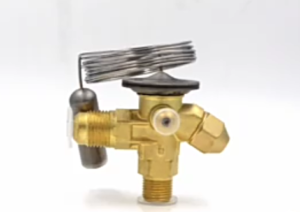There are many different components that make up an air conditioning system, and understanding how each one works can help you to troubleshoot problems, perform maintenance and repairs, and even choose the right system for your home or office.
In this essential guide, we will explain the key components that make up an air conditioning system, from the compressor to the evaporator and everything in between. Whether you are a homeowner, HVAC technician, or just curious about how air conditioning works, read on to learn more about this essential technology.
To start off, let’s begin with an introduction to air conditioning systems and their components. An air conditioning system is a complex network of parts and mechanisms designed to cool and dehumidify the air in a given space. It consists of several key components that work together seamlessly to achieve the desired indoor temperature.
The heart of any air conditioning system is the compressor. This vital component is responsible for circulating the refrigerant, a special fluid that absorbs heat from the indoor air and carries it to the outdoor unit. The compressor compresses the refrigerant, raising its temperature and pressure, before it is sent to the condenser.
The condenser, located in the outdoor unit, plays a crucial role in dissipating the heat absorbed by the refrigerant. As the hot refrigerant passes through the condenser coils, it releases its heat to the surrounding air, thus cooling down and transforming into a high-pressure liquid. This liquid then flows to the expansion valve or metering device.
The expansion valve regulates the flow of the high-pressure liquid refrigerant into the evaporator coil, which is typically located indoors. As the refrigerant enters the evaporator coil, its pressure drops, causing it to evaporate into a low-pressure gas. This phase change allows the refrigerant to absorb heat from the indoor air, thus cooling it down.
Simultaneously, the evaporator coil helps remove moisture from the air, reducing humidity levels and enhancing overall comfort. The cooled and dehumidified air is then distributed through the air ducts and vents, effectively lowering the temperature in the room.
To ensure the air conditioning system operates efficiently, other essential components such as the blower fan, air filters, and thermostat work in tandem. The blower fan helps circulate the cooled air throughout the space, while the air filters remove dust, pollutants, and allergens from the air, ensuring clean and healthy indoor air quality. The thermostat acts as the control center, allowing users to set their desired temperature and regulate the system’s operation.
Whether you are considering installing a new air conditioning system or simply curious about how your current system works, this guide will equip you with the knowledge to make informed decisions and appreciate the intricacies of air conditioning technology. So, let’s embark on this journey together and unlock the secrets behind the components that make up an air conditioning system.
Role of the compressor in an air conditioning system
The compressor is a crucial component of an air conditioning system, playing a vital role in its overall functionality. Acting as the heart of the system, the compressor is responsible for circulating and pressurizing the refrigerant, enabling the cooling process to take place effectively.
The primary function of the compressor is to compress low-pressure refrigerant vapor, which enters the compressor from the evaporator coil. As the refrigerant is compressed, its temperature and pressure increase significantly. This high-pressure and high-temperature refrigerant then moves on to the condenser coil, where it releases heat and transforms into a high-pressure liquid.
The compressor’s ability to compress the refrigerant is achieved through a mechanical process. It consists of a motor, pistons, and valves that work together to create a suction and compression cycle. The motor provides the necessary power to drive the pistons, which are responsible for compressing the refrigerant gas. The valves, on the other hand, ensure that the flow of refrigerant is controlled and directed properly.
Due to the nature of its function, the compressor needs to be durable and efficient. It should be able to withstand high pressures and temperatures while operating smoothly and quietly. Different types of compressors exist, including reciprocating, rotary, and scroll compressors, each with its own advantages and specific applications.
Understanding the condenser and its function
The condenser is a crucial component of an air conditioning system, responsible for the efficient cooling of indoor spaces. Understanding its function is essential for anyone looking to gain insights into the workings of an AC unit.
Located in the outdoor unit of the system, the condenser plays a vital role in the heat transfer process. Its primary function is to release the heat absorbed from indoors by the evaporator coil. As the refrigerant flows through the evaporator coil, it absorbs heat from the indoor air, which cools the air in the space.
Once the refrigerant has absorbed the heat, it travels to the condenser. Here, the process of heat release begins. The condenser has a network of coils and fins that facilitate the transfer of heat from the refrigerant to the outdoor air. This is accomplished through a combination of convection and forced air, aided by a fan.
The condenser also plays a crucial role in the refrigeration cycle. As the high-pressure, high-temperature refrigerant enters the condenser, it undergoes a phase change from vapor to liquid. This process allows the refrigerant to release large amounts of heat, making it essential for effective cooling.
To enhance the heat transfer efficiency, the condenser coils are often made of copper or aluminum. These materials possess excellent thermal conductivity, allowing for the rapid transfer of heat. Additionally, the condenser coils are designed with a large surface area to maximize contact with the outdoor air, further optimizing the cooling process.
Regular maintenance of the condenser is essential for the proper functioning of the air conditioning system. Over time, the coils and fins may accumulate dirt, dust, and debris, hindering heat transfer and reducing efficiency. Therefore, it is recommended to clean the condenser regularly and ensure proper airflow around the unit for optimal performance.
How evaporator coil works to cool the air
When it comes to air conditioning systems, the evaporator coil plays a crucial role in cooling the air. Nestled inside the indoor unit, this vital component is responsible for absorbing heat and moisture from the air, resulting in a refreshing and comfortable indoor environment.
The evaporator coil works on the principle of heat transfer. As warm air from the room is drawn into the unit, it passes over the coil’s cold surface. The refrigerant flowing through the coil absorbs the heat from the air, causing it to evaporate into a gas state. This process effectively cools down the air, creating a pleasant and cool atmosphere.
To ensure optimal performance, the evaporator coil relies on a constant flow of refrigerant. This refrigerant, typically a chemical compound known for its low boiling point, undergoes a continuous cycle of compression and expansion to facilitate the cooling process. As it enters the coil, the refrigerant is in a low-pressure, low-temperature state. As the warm air passes over the coil, it absorbs the heat from the air and undergoes a phase change, transitioning from a liquid to a gas. The now-warmed refrigerant is then carried away to the outdoor unit for the next stage of the cooling process.
It is worth noting that the evaporator coil also plays a role in dehumidifying the air. As the warm air comes into contact with the cold coil, the moisture in the air condenses on the coil’s surface. This condensed moisture is collected and drained away, leaving the air drier and more comfortable.
Proper maintenance of the evaporator coil is essential to ensure its efficiency and longevity. Regular cleaning and inspection help prevent the build-up of dirt, dust, and debris that can impair its performance. Additionally, scheduling professional maintenance services can identify any potential issues and ensure that the coil is functioning optimally.
Importance of the refrigerant in the system
When it comes to understanding the components that make up an air conditioning system, one cannot overlook the importance of the refrigerant. The refrigerant plays a vital role in the cooling process, making it an essential component to consider.
The refrigerant is a special chemical compound that circulates throughout the air conditioning system, absorbing heat from the indoor air and releasing it outside. It undergoes a continuous cycle of evaporation and condensation, allowing it to transfer heat efficiently.
One of the critical properties of the refrigerant is its low boiling point. This allows it to evaporate quickly when it absorbs heat from the indoor air, turning from a liquid into a gas. As it evaporates, it removes the heat, leaving behind cool air that is then circulated back into the room.
Once the refrigerant has absorbed the heat, it travels to the outdoor unit of the air conditioning system. Here, it releases the heat to the outside environment by condensing back into a liquid state. This process allows the refrigerant to cool down and prepare itself for another cycle of heat absorption.
Choosing the right refrigerant for an air conditioning system is crucial. It must have the right properties and characteristics to ensure optimal cooling performance while also considering environmental factors. The industry has evolved over the years to introduce more environmentally friendly refrigerants, such as those with lower ozone depletion potential and global warming potential.
Regular maintenance and proper handling of the refrigerant are essential to ensure the efficient functioning of the air conditioning system. Refrigerant levels should be checked, and any leaks or issues should be promptly addressed to prevent a decline in cooling performance.
Explaining the expansion valve and its purpose
The expansion valve is a crucial component of an air conditioning system that plays a vital role in regulating the flow of refrigerant. Located between the condenser and the evaporator, this small but mighty valve serves as a gateway that controls the refrigerant’s journey through the system.
The purpose of the expansion valve is twofold. Firstly, it is responsible for reducing the pressure of the refrigerant as it transitions from the high-pressure liquid state to the low-pressure vapor state. This pressure drop allows the refrigerant to expand and absorb heat from the surrounding air, enabling the cooling process to take place.
Secondly, the expansion valve regulates the flow rate of the refrigerant into the evaporator. By carefully controlling the amount of refrigerant entering the evaporator coil, it ensures optimal cooling performance and prevents any potential damage that could be caused by excessive or insufficient refrigerant flow. This precise regulation is essential for maintaining the efficiency and effectiveness of the air conditioning system.
The expansion valve operates based on the principles of temperature and pressure. It senses the temperature of the refrigerant leaving the evaporator coil and adjusts the valve opening accordingly to maintain a consistent temperature and pressure level. This continuous monitoring and adjustment allow the system to adapt to varying cooling demands, ensuring comfort and energy efficiency.
In terms of construction, the expansion valve consists of several key components, including a sensing bulb, a diaphragm, a valve stem, and an orifice. The sensing bulb is attached to the suction line of the evaporator and detects the refrigerant temperature. This information is then transmitted to the diaphragm, which controls the opening and closing of the valve. The valve stem, connected to the diaphragm, adjusts the size of the orifice, thereby regulating the refrigerant flow.
Significance of the blower motor and fan in air circulation
Blower motor and fan play a crucial role in ensuring proper air circulation throughout the space. These components work together to create a comfortable indoor environment by distributing cool air evenly.
The blower motor serves as the powerhouse of the air conditioning system. It is responsible for generating the necessary force to move air through the system. This motor is typically located inside the indoor unit and is connected to a fan.
The fan, on the other hand, is responsible for pulling in air from the surrounding environment and pushing it through the system. It consists of blades or fins that spin rapidly, creating a flow of air. This airflow is essential for removing heat from the indoor space and replacing it with cool air.
The significance of the blower motor and fan lies in their ability to maintain consistent air circulation. Without them, the air conditioning system would be incapable of effectively cooling the room and providing a comfortable atmosphere.
In addition to cooling, the blower motor and fan also play a role in maintaining indoor air quality. By continuously circulating the air, these components help filter out dust, allergens, and other particles, ensuring a cleaner and healthier living environment.
To ensure optimal performance and longevity of the blower motor and fan, regular maintenance is essential. This includes cleaning or replacing air filters, lubricating moving parts, and inspecting for any signs of wear or damage.
The role of the thermostat in controlling temperature
Acting as the command center for your AC unit, the thermostat is responsible for sensing the current temperature in your space and signaling the air conditioner to maintain a desired temperature.
Modern thermostats are equipped with advanced features that allow you to set specific temperature preferences, program schedules, and even control your AC remotely through smart devices. With the ability to adjust temperature settings with just a few taps on your smartphone, you can ensure that your living or working environment is always at the perfect temperature, no matter where you are.
The thermostat communicates with the air conditioner through a series of electrical signals, ensuring that the desired temperature is achieved and maintained. When the temperature in the space rises above the set level, the thermostat will signal the AC unit to start cooling. Conversely, when the temperature drops below the set level, the thermostat will instruct the AC unit to stop cooling.
In addition to temperature control, some thermostats also offer features such as humidity control, energy-saving modes, and even air quality monitoring. These additional features can greatly enhance the comfort and efficiency of your air conditioning system.
It’s important to note that the placement of your thermostat can greatly impact its effectiveness. To ensure accurate temperature readings, the thermostat should be installed in a central location away from direct sunlight, drafts, and heat-emitting appliances. This ensures that the thermostat accurately reflects the overall temperature of the space and avoids unnecessary fluctuations.
Ductwork and its impact on air distribution
Ductwork plays a crucial role in the functionality and efficiency of an air conditioning system. It serves as the conduit through which cooled or heated air is distributed throughout a building, ensuring optimal comfort levels in every room. Understanding the basics of ductwork and its impact on air distribution is essential for anyone looking to maximize the performance of their air conditioning system.
Ductwork consists of a network of channels, typically made of metal, fiberglass, or flexible material, that transport conditioned air from the central unit to various areas of a building. These channels are strategically designed and placed to deliver the right amount of airflow to each room, creating a balanced and even distribution of conditioned air.
The size and layout of the ductwork directly affect the efficiency and effectiveness of air distribution. Proper sizing is crucial, as ducts that are too small can restrict airflow, leading to reduced cooling or heating capacity and potential strain on the system. On the other hand, oversized ducts can result in excessive airflow, leading to energy wastage and poor temperature control.
Additionally, the design and installation of ductwork should account for factors such as obstructions, insulation, and air leakage. Any obstructions, such as furniture or structural elements, should be considered during the planning phase to ensure unobstructed airflow. Proper insulation of ducts helps prevent heat gain or loss, ensuring that conditioned air maintains its desired temperature as it travels through the system. Lastly, minimizing air leakage is vital to prevent energy loss and maintain the efficiency of the air conditioning system.
Regular maintenance and cleaning of ductwork are also important to ensure optimal air distribution. Over time, dust, debris, and allergens can accumulate within the ducts, hindering airflow and potentially impacting indoor air quality. Periodic inspections and professional cleaning can help maintain a clean and efficient ductwork system.
Maintenance tips for keeping your air conditioning system in optimal condition
Regular maintenance is key to ensuring that your air conditioning system operates in optimal condition. By following these maintenance tips, you can extend the lifespan of your system and avoid costly repairs or replacements.
1. Change your air filters: Dirty air filters can obstruct airflow and reduce the efficiency of your system. It is recommended to change your filters every one to three months, or as recommended by the manufacturer.
2. Clean the outdoor unit: Over time, dirt, debris, and leaves can accumulate on the outdoor unit, obstructing airflow. Regularly clean the unit using a soft brush or hose to remove any build-up.
3. Clear the surrounding area: Ensure that the area around your outdoor unit is clear of any vegetation, shrubs, or debris. This allows for proper airflow and prevents the unit from overheating.
4. Check the condenser coils: Inspect the condenser coils for dirt, dust, or debris. If necessary, gently clean them using a coil cleaner or a mixture of water and mild detergent. Be sure to turn off the power before performing any cleaning tasks.
5. Schedule professional maintenance: Consider scheduling an annual maintenance visit with a qualified HVAC technician. They can inspect and clean various components of your system, including the evaporator coils, refrigerant levels, and electrical connections.
6. Monitor thermostat settings: Adjusting your thermostat settings can help conserve energy and reduce strain on your system. Set the temperature to a comfortable level when you are at home, and raise it slightly when you are away.
7. Keep vents and registers unobstructed: Ensure that vents and registers are free from obstructions such as furniture, rugs, or curtains. This allows for proper airflow and helps maintain consistent temperatures throughout your home.
By following these maintenance tips, you can maximize the efficiency and performance of your air conditioning system, ensuring a comfortable indoor environment all year round. Remember, a well-maintained system not only saves you money on energy bills but also contributes to a longer lifespan for your air conditioner.



